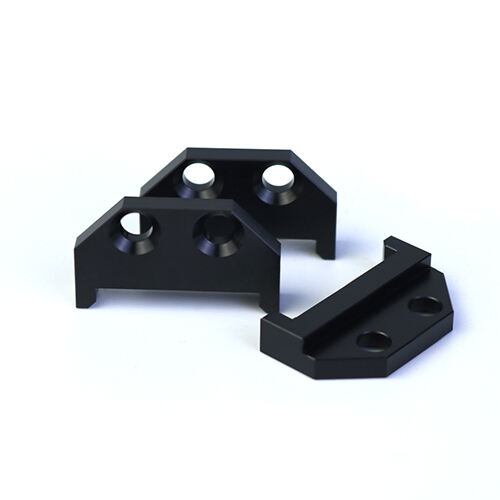Small CNC parts in professional manufacturing: precision machining leads the industry change
As the global manufacturing industry transforms towards high precision and high efficiency, precision machining of small CNC (computer numerical control) parts is becoming the core force driving industry change. By breaking through the limits of traditional machining technology CNC machining not only meets the stringent needs of aerospace, medical, electronics and other fields, but also provides new possibilities for complex geometric shapes and miniaturized designs.

Technological breakthrough: the ultimate precision of precision machining
The processing capabilities of small CNC parts are known for micron-level or even sub-micron-level tolerances. For example, micro CNC machining can achieve tolerance control of 0.001 mm, which is accurate enough to meet the stringent requirements of key components such as aerospace engine blades and medical implants. Through multi-axis linkage, high-precision tools and advanced software (such as CAD/CAM), CNC machining can achieve precise shaping of complex contours and even maintain surface finish during material removal. This technological breakthrough has transformed precision manufacturing that originally relied on manual or traditional machine tools into repeatable, quantifiable automated production.
Empowering multiple industries: Wide applications from medical to electronics
The influence of precision CNC machining has penetrated into multiple key areas:
• Medical industry: In the manufacture of surgical instruments, orthopedic implants and prostheses, CNC technology ensures biocompatibility and functionality. For example, the micron-level tolerance of titanium alloy joint prostheses is directly related to the patient's postoperative recovery effect.
• Aerospace: Jet engine turbine blades, fuel system components, etc. need to withstand extreme environments. CNC machining solves the processing problems of complex cavities and free-form surfaces through high consistency.
• Electronics and communications: The size of electronic components such as micro connectors and circuit board assemblies has been reduced to the millimeter level. The high precision of CNC machining has become the key to achieving lightweight and integrated equipment.
• Automotive industry: The precision machining of fixed calipers, brakes and other parts improves the performance and safety of the entire vehicle while reducing energy consumption.
Challenges and responses: technical bottlenecks and innovative practices
Despite the significant advantages of CNC machining,its miniaturization production still faces challenges:
• Tool and fixture design: Micro-part machining requires customized tools and precision fixtures to cope with thermal deformation problems in high-speed cutting.
• Material selection: The machining of high-hardness alloys (such as titanium alloys) and composite materials requires optimized cutting parameters to avoid material fatigue or cracks.
• Cost control: In single-piece small-batch production, the equipment investment and process debugging costs are high, but simulation software (such as CAM simulation) and process optimization can significantly reduce waste.
The industry has responded to the above challenges through technological upgrades. For example, the introduction of a hybrid process of additive manufacturing (3D printing) and CNC machining not only retains the flexibility of additive manufacturing, but also uses the high precision of CNC to complete the final contour machining. In addition, the application of the Internet of Things (IoT) and artificial intelligence (AI) has further improved production efficiency and reduced downtime through real-time monitoring and predictive maintenance.
Future trends: Intelligence and sustainability drive change
Looking to the future, CNC precision machining is moving towards a smarter and greener direction:
• Automation and robot integration: Multi-axis CNC machine tools and industrial robots work together to achieve 24-hour unmanned production, improving production capacity and flexibility.
• Sustainable manufacturing: By optimizing cutting parameters and material utilization, CNC machining reduces waste generation and complies with environmental regulations.
• Customized production: Flexible manufacturing systems (such as SOP) enable companies to respond quickly to customer needs and meet the market trend of small batches and multiple varieties.


